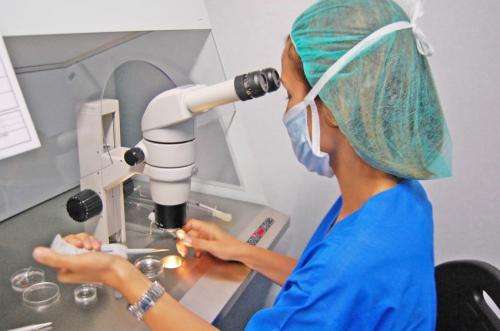Uterine contractions increase the success of artificial insemination

The negative impact of contractions during in vitro fertilisation is a well-known fact. What was unknown until now was the effect it had on artificial insemination. A new study has discovered that it is the contrary to that seen in embryo transfer: there is an improved chance of getting pregnant.
Researchers from the Valencian Infertility Institute (IVI) have demonstrated that the number of contractions of the uterus per minute is a parameter associated with success in artificial insemination procedures.
The study, recently published in the journal Fertility & Sterility, has been carried over the course of five years with data obtained from a sample of over 600 women.
"The number of uterine contractions per minute is positively related to the rate of clinical pregnancy and that of live births following artificial insemination, with the correct synchronisation of the moment of insemination being especially important," explains Manuel Fernández, the main author of the work and director of the IVI in Seville.
Additionally, as Fernández says: "When the number of contractions is high, the rates of pregnancy and live births are also notably elevated".
Artificial insemination is, according to experts, one of the assisted reproduction techniques that has developed the least during recent years, as it has lost importance in favour of other more complex techniques that have higher success rates per cycle.
It is one of the most physiological and widely used assisted reproduction procedures, due to its low complexity. The data supports the idea that this technique has a success rate of 15-20% per cycle if it is carried out with the partner's sperm and 25% if it is carried out with a donor's sperm.
Predictors of the live birth rate
In the study, other predicting variables that are independent of the rate of live births following artificial insemination have also been detected: type of insemination treatment (sperm of partner or donor), maternal age and number of follicles.
"We have observed that synchronising the day of insemination with the moment of the follicular rupture (when the egg is released) is key to improving the results of this kind of treatment. If we manage to improve artificial insemination success rates using this and other studies, we would be contributing to an important advance, given that this is currently the most accessible and widely used treatment," concludes Fernández.
More information: Víctor Blasco, Nicolás Prados, Francisco Carranza, Cristina González-Ravina, Antonio Pellicer, Manuel Fernandez-Sanchez. 'Influence of follicle rupture and uterine contractions on intrauterine insemination outcome. A new predictive model'. Fertility & Sterility, Volume 102, Issue 4, Pages 1034-1040, 2014.


















